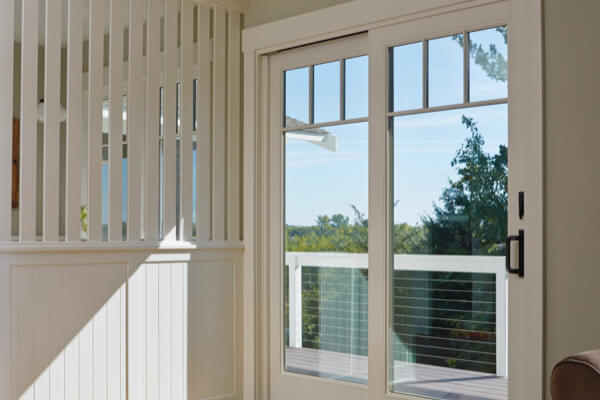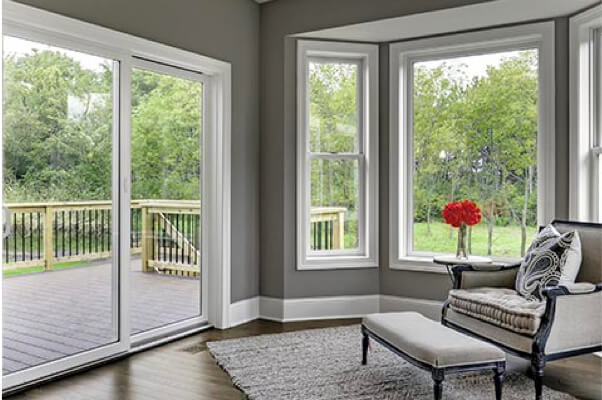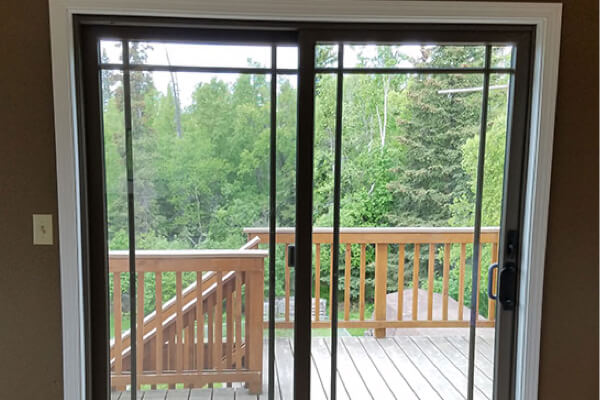Feeling a cold draft in your home this winter? It’s a good idea to check all of the doors and windows throughout your home to find any sources of cold air coming in. Drafts are a common complaint we hear from homeowners dealing with outdated or inefficient sliding glass doors. If replacing the door is not an option right now, there are some DIY tricks you can try.
To help insulate sliding glass doors for winter, we recommended these five things to keep heat in and the cold out:
- Clean sliding door tracks
- Seal gaps and cracks
- Check the weatherstripping
- Add fin seal or brush fin weatherstripping
- Cover doors with a window film insulation kit
Clean the sliding door tracks.
Dirt, debris, even pet hair can cause a sliding glass door to lift off its track leading to drafts and energy loss.
To eliminate drafts, frequently vacuum the door tracks. You can use a shop vac or an attachment on your regular vacuum cleaner.
Seal gaps and cracks.
Turning the thermostat up without feeling much change in interior temps? Make sure all gaps and cracks around your sliding door are sealed by caulking around the sliding door casing. Before caulking scrape and vacuum old caulk or sealant. Then apply caulk to your newly cleaned sliding door frame where it meets the window.
Check the weatherstripping.
Sliding doors that have been properly installed include weatherstripping but the material tends to deteriorate over time so we recommend replacing your weatherstripping every few years.
The most effective weatherstripping application is with one continuous piece. Measure the four sides of your sliding glass door, then find the proper size kit that allows you to apply and seal your door all the way around.
Add fin seal or brush fin weatherstripping.
Some sliding doors are installed with foam weatherstripping which doesn’t always hold up to constant use or for long periods of time–especially in harsh Alaska elements.
You can replace the foam with weatherstripping known as fin seal or brush fin specifically designed for sliding glass doors. Fin seal or brush seal weatherstripping has a mylar fin in the middle of the pile, or brush material. It is extremely durable, good for nearly all climates, and stands up well to high traffic use.
Add another barrier to keep cold out with a window film insulation kit.
If you’ve filled gaps and cracks around your sliding door with caulk but are still feeling cool air through your windowpane, cover the glass with a patio door insulation kit. Insulation film basically acts as a storm window and can be applied with adhesive or magnetic tape.
Insulation film will help you save energy, reduce your heating cost, reduce condensation on the glass, and will prevent frost buildup on your sliding door. Applying film to a sliding glass door is fairly simple, here’s how to do it:
- Clean your sliding door, then measure all four sides of your door frame.
- Cut and measure the adhesive or magnetic tape that comes with the patio door insulation film kit adding 10+ inches to height and width measurements for a 5’ overhang on each side of your sliding door.
- Apply adhesive tape to your whole door, leaving a 1-inch space from your window from the window frame edge.
- Press the plastic film firmly to your pre-taped patio door frame starting at the top and working down to the bottom of the window without leaving any gaps.
- Grab your hairdryer, select high heat, then blow-dry the plastic to smooth out wrinkles in the insulation film.
We hope you find these tactics helpful in keeping your home warm and cozy this winter. For more advice, check out 5 Tips on How to Insulate Windows for Winter to help winterize your windows!
Questions on how to winterize your sliding glass doors?
Give us a call at (907) 308-7784! If you’re thinking about replacing your sliding glass doors this year, you’re in luck. Our Frenchwood® Sliding, Narroline® Sliding, and Perma-Shield® Sliding doors are all great options. Contact us for a free estimate on a replacement door.










